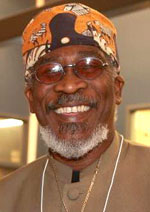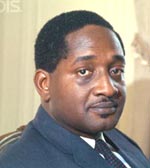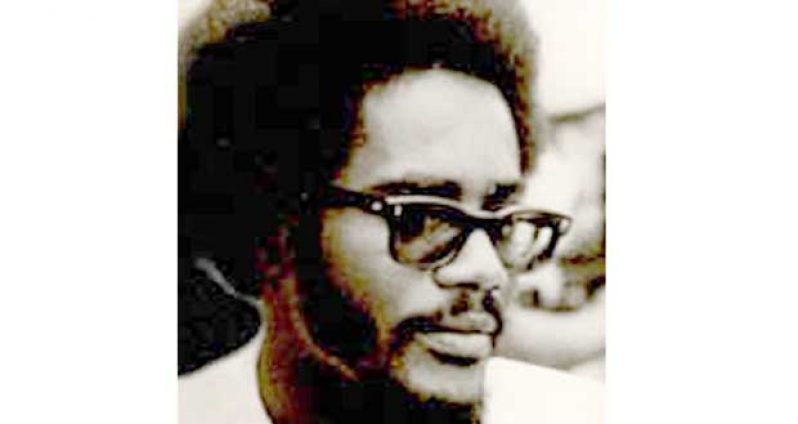Special Report on the Rodney Commission of Inquiry by Shaun Michael Samaroo
Former Chronicle senior reporter under PNC Government escaped dictatorship to Canada as Political Refugee
Saul fled PNC regime in fear
FORMER journalist at the Guyana Chronicle, Leon Saul, fled for fear of his life facing persecution under the Government of the People’s National Congress (PNC), and became a “Political Refugee” in Canada.

Saul yesterday told the Walter Rodney Commission of Inquiry that he faced severe persecution under the PNC regime.
He re-migrated to Guyana four years ago.
Saul was the Chronicle Journalist who first reported that a bomb blast had killed Dr Walter Rodney in Georgetown on the dark night of Friday, June 13, 1980.
The night that his report appeared on the front page of the Chronicle, Sunday, June 15, 1980, he said, someone called his house and issued a “death threat” against him. He duly told this to his Editor, Eleazor Watson, on the following day, who promptly replaced Saul on the story.
“I could not conduct investigative reporting” into the bomb blast, he said.
Under intense, brilliant cross examination by Counsel for the Working People’s Alliance (WPA), Christopher Ram, Saul said only the State of the PNC Government had the “resources” to plan and execute the bomb blast assassination of Dr Rodney and to cover up the conspiracy after.
Worldwide suspicion has fingered the PNC Government for the assassination. The current Presidential Commission of Inquiry is seeking to solve the 34-year old cold case of the worst political assassination in the history of the Commonwealth Caribbean, and Saul sought to shed light on how the State media under the PNC Government reported on the brutal demise of Dr Rodney.
The former Journalist said that, contrary to what ex-head of the Guyana Defence Force (GDF), Major General Norman McLean, told the Commission in testimony, the PNC Government knew of Gregory Smith’s existence.
Under intense, brilliant cross examination by Counsel for the Working People’s Alliance (WPA), Christopher Ram, Saul said only the State of the PNC Government had the “resources” to plan and execute the bomb blast assassination of Dr Rodney and to cover up the conspiracy after.
Worldwide suspicion has fingered the PNC Government for the assassination. The current Presidential Commission of Inquiry is seeking to solve the 34-year old cold case of the worst political assassination in the history of the Commonwealth Caribbean, and Saul sought to shed light on how the State media under the PNC Government reported on the brutal demise of Dr Rodney.

The former Journalist said that, contrary to what ex-head of the Guyana Defence Force (GDF), Major General Norman McLean, told the Commission in testimony, the PNC Government knew of Gregory Smith’s existence.
The only eyewitness to the bomb blast that shattered Dr Rodney’s lower torso, his brother Donald Rodney, pointed to Smith as the prime frontman in a PNC Government conspiracy to plot and execute a deadly plan to assassinate the populist political leader.
Saul said the newsroom at the Chronicle was aware of Smith’s existence, but not where he could be located.
Captain Gerry Gouveia, former GDF pilot, testified at the Commission that he flew a family that fits the description of Smith and his wife and children to a hinterland location on June 14, 1980, the day after the bomb blast shattered the peace of Georgetown and forever transformed the history of Guyana.
Speculating, Saul told the Commission that it’s “possible” Dr Rodney died at the hands of either the PNC, the People’s Progressive Party (PPP), or even his own party, the Working People’s Alliance (WPA).
But under intense cross examination from Ram, Saul said only the PNC State machinery would have had the resources to carry out such a deadly plot, and cover it up after.
Sporting dreadlocks and dressed fashionably in a light beige suit, with a white woolen hat over his neat locks, Saul appeared in the witness box, looking at ease, and at times Commission Chairman Sir Richard Cheltenham proceeded to caution him to tone down his “wit”.
Saul said he fled Guyana after the PNC State persecuted him, and became a “political refugee” in Canada.
He said he admired Dr Rodney, and read his books, and became a Rastafarian devotee because of the influence of those books. But he never attended meetings of the WPA, nor did he personally meet Dr Rodney.
He said after he chose to live as a Rastaman, and vowed to live only for “truth”, he felt victimized at the PNC-controlled Chronicle, where he had moved to work as Senior Reporter after excelling at a new communications course at the University of Guyana in 1977. He was first seconded to the Chronicle from the PNC Government’s propaganda arm, the Ministry of Information, and then became a full time Journalist at the Chronicle. However, he quit after the Chronicle became “untenable”, and after facing State persecution, incarceration, trumped up charges and the cutting off of his dreadlocks while in lockup, he fled to Canada and applied for Refugee Status as a political refugee, which Canada granted to him.
Saul moved back to Guyana four years ago, and today is head of the Rastafarian Council and an executive member of the Reparations Committee.
He’s also involved in drama productions.
The colorful character recounted to the Commission his own thoughts on the crisis in Guyana that caused Dr Rodney’s death, noting that the atmosphere was one of persecution and fear, with several Rastamen “killed” and victimised and marginalised.
Saul, however, debunked the idea that Forbes Burnham ordered Dr. Rodney’s assassination, insisting under persistent questioning from the Commissioners, that the State may have carried out the plotting and execution without Burnham’s sanction. “If anything it would have been over zealousness on the part of the dirty trick operators, the boys in the back room”, he said in his signed written statement.
Like Burnham and Dr Rodney, Saul attended Queens College, where he knew Donald Rodney, the only eyewitness to the bomb blast. Rodney escaped the blast wounded and bleeding after the bomb exploded, instantly killing Dr Rodney.
“I was one of the media team sent to view Dr Rodney’s body in the morgue, on the morning of June 14, 1980. I went with photographer Wilfred Lee. I wrote story – attached. I spoke to several sources from Guyana Information Service – people in the John Street area where the incident occurred. I spoke to the police. The police gave one response that investigations were continuing. Reports had come into the newsroom saying it had been Dr Rodney who had been killed. I did not speak to any of the Rodney family”, Saul said in his written statement to the Commission.
He said the atmosphere at the time Dr Rodney was assassinated “was generally a tense situation in the society”.
Saul said that his view is that “an explosive was planted” on Dr Rodney. The PNC Government has said repeatedly that Dr Rodney activated the bomb by accident on himself. But Saul said otherwise, noting that “I don’t think he knew he had one (bomb) in his hand”.
Saul told the Commission when he saw Dr Rodney’s body at the morgue on June 14, 1980, the lower torso was blown apart, with the legs attached “to the skeleton”. But he said Dr Rodney’s face was fully intact and easily recognisable.
The former Journalist confirmed testimonies throughout the Commission’s hearings that “… there was heavy handedness in the disciplined force in holding down dissent and preventing Opposition protest”.
This “heavy handedness” eventually turned on Saul himself, and he fled into self-exile, living in Canada from 1981 to his re-migration to Guyana four years ago.



.jpg)








